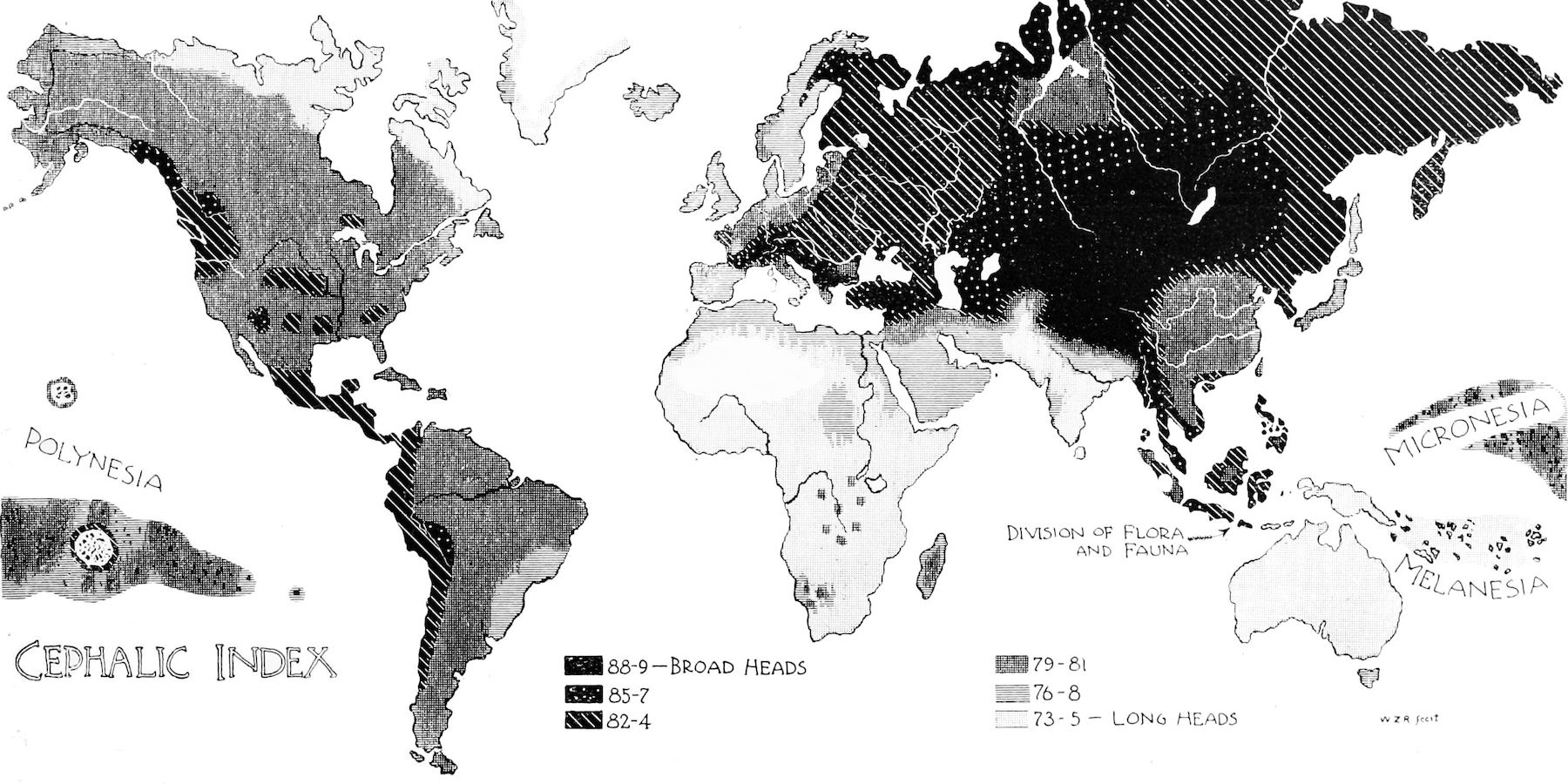ALICE DREGER: We don't actually know the extent to which gender is socially constructed because you can't do an experiment where you remove culture and see what happens. So we don't know to what extent what we see as gendered patterns are the result of sex, biological sex, males and females. We know that gender differs according to culture, but we also know that there are patterns that appear to be fairly universal in terms of gender norms. And the ones that are more universal are more likely to probably have a sex bases to it, an evolved-to-sex basis, that is to say biological basis for males and females. So, for example, which gender serves a very important meal may be different by different cultures. So in some cultures a man will serve a very important meal versus a woman. So for example, think about it in the United States that historically speaking the father carves the turkey on Thanksgiving, but in general women prepare food historically speaking. So what we know is that these kinds of things can differ by culture, but that there are some "universals". And one of the universals we find, for example, is in childhood play that we find that children who are girls tend to do more social play, they tend to do more social role-play. Children who are boys tend to do more competitive play, they tend to do more play that mimics aggression or that mimics sport and mimics sometimes building, and so there are these kinds of patterns. But that doesn't mean everybody fits them.
And it's really interesting actually too if you look cross-culturally scientists find evidence that this may have – it's not just gender, that there's a sexuality component to it too. So boys who are going to grow up and be gay, and we know who they are because of retrospectively they grow up to be gay, they're what's called androphilic, that is to say they're attracted to males. And the majority of females are also attracted to males, so most females are androphilic and a small percentage of boys will grow up to be androphilic. We know that historically speaking, cross-culturally they tend to be more feminine in terms of their interests, they're more interested in social role-play, for example, they're more interested in helping their mothers, they're more interested in associating with girls as young children and more interested in dressing as girls, for example. That doesn't mean that they are girls, but it does suggest to us that sexuality and gender have interplayed components in them, that gender isn't just about social role but it has something to do with sexuality and that there's a reason females end up with these kind of patterns and males end up with these kinds of patterns and when you have a male who's attracted to males he ends up with a little bit more of the female pattern and in some circumstances if you have a girl and she's attracted to girls she'll end up with a little bit more of the male pattern in childhood.
So gender and sexual orientation seem to have sort of some connection to each other, but it's not a perfect connection in terms of absolute correlation and so we can't say that we can easily predict what would be somebody's gender role or sexual orientation simply by looking at some of the components.
Evolution would naturally favor heterosexuality because that's how you get babies. And so if we're thinking about genes trying to produce genes it would make no sense to have genes that would lead to people who don't reproduce, because those genes would not be reproduced. That said, we know cross-culturally gay people exist. So we know that that's a natural variation in the population. And so then scientists ask the really interesting question, why is that there? Why does that not disappear over time? Because at least in theory that should lead to lower reproductive fitness, which means it should lead to fewer babies, and so it should fade out evolutionarily speaking. One possibility is that it's a side effect, that human variation is good for the species and so evolution is responding to the situation not by reducing necessarily everything that doesn't work, but saying "Let's keep throwing up variation, and some of it will work in some environments and some of it will work in other environments." Being a varied species makes a species more resilient.
So it may be the case that being gay if you're born that way is just a variation on a theme and it will show up every now and then just because variations show up. But some scientists find some evidence that there may actually be advantages to a family of having a certain percentage of the children be gay. And this is work done, for example, by Paul Vasey at the University of Lethbridge. And he's been looking at the population in Samoa as well as other places, but Samoa as a cultural system that actually recognizes that a certain percentage of the boys are going to grow up to be androphilic, they're going to be interested in men sexually. And they actually have a whole cultural system for it. They have a third gender category called the fa'afafine and when a boy it becomes evident is that kind of boy the child is raised as a girl and becomes a woman culturally speaking but that doesn't change her body at all but partners with men. So in our culture that would be called transgenderism, but in this culture it's a third gender category that absorbs what in our culture might just turn out to be gay men. And what Paul has found is that when he looks at the families that have fa'afafine within them the fa'afafine are not using up a lot of resources, because they're not themselves having children—these are big-family cultures—but they do take their own earnings and they direct it at their nieces and nephews. And that means you have more adults producing more resources for a smaller number of children. So biologically there may be an advantage for families to have a certain number of gay children, because those people will not reproduce but they will take care of the nieces and nephews. And so overall the population, the genetics of a family will be continued on because that family has a genetic advantage.
And when you think about it we have this sort of stereotype of the gay uncle who takes care of the nieces and nephews in terms of providing for them and providing extra resources, and they're not spending it on their own kids, they're spending it on their sister's and brother's children, that might be a possible evolutionary explanation for why it is that we see homosexuality persist in the human system. It's also the case, we know from work done by Ray Blanchard in Canada, that a certain number of men who will grow up to be gay get that way not through genetics per se, but they get that way in the womb. So it's inborn but not genetic. And what happens is apparently — well we know statistically from huge studies now — if a mother has lots of pregnancies of males every successive male will be a little bit more likely to be gay. So the father down you go in that sibling chain the more likely it is that the later-born males will be gay. This has been studied in many populations in the world, large numbers, and it's rigorous. We know that this is true. So why would that be? Well, it looks like it's a kind of side effect: the mother's immune system appears to be reacting to male hormones and maybe dampening them down a little bit, and this results in something called the fraternal birth order effect, which is that later born males are more likely to be gay. It's a surprising finding because it suggests to us that some men are absolutely born gay but not because of genetics, they're born gay because of the birth order in terms of some sort of effect having on a woman's system, which is reacting to her children's system, and it only occurs in males, it doesn't occur in females. And that's part of the reason why the theory is it's an immune response because it doesn't occur with females it only occurs with males born out of the same womb. So that's something I've colloquially called womb-gay, but it's called the fraternal birth order effect. And I think the evidence is very strong that a certain percentage of gay people are born that way. We do not have good evidence that straight people are born that way. We don't bother to look for that evidence. Straight people have been less interesting to scientists than gay people in terms of where they come from. And that's because there's a heterosexist assumption that straight people "require no explanation" and gay people "require explanation."
I mean in terms of evolution gay people do require an explanation. Logically speaking we should say "Well that's not a very 'successful strategy,'" as it's called in science, it doesn't lead to a higher reproductive fitness meaning it doesn't lead to more babies. So logically you would want to explain gay people. But it's also a political issue that basically straight people have required no explanation and gay people have required explanation. And some of the explanations historically have been rather unpleasant, like blaming mothers who are frigid or overly clingy in the case of being gay—"over clingy mothers make gay boys." What we know from cross-cultural studies is that gay boys are more interested in being with their mothers than straight boys, and so it's not that the mothers are more clingy it's that the boys are more tolerant of time with their mothers.
So we've studied much more about gay people that we have studied about straight people, and straight people remain largely a mystery as to how they operate. What makes them straight? We don't really know. We also don't know why gay people are attracted to each other anymore than we know why straight people are attracted to each other. We have hints about smells and about genetic interactions and about facial symmetry, but we really know very little about why straight people are straight and why gay people are gay.





